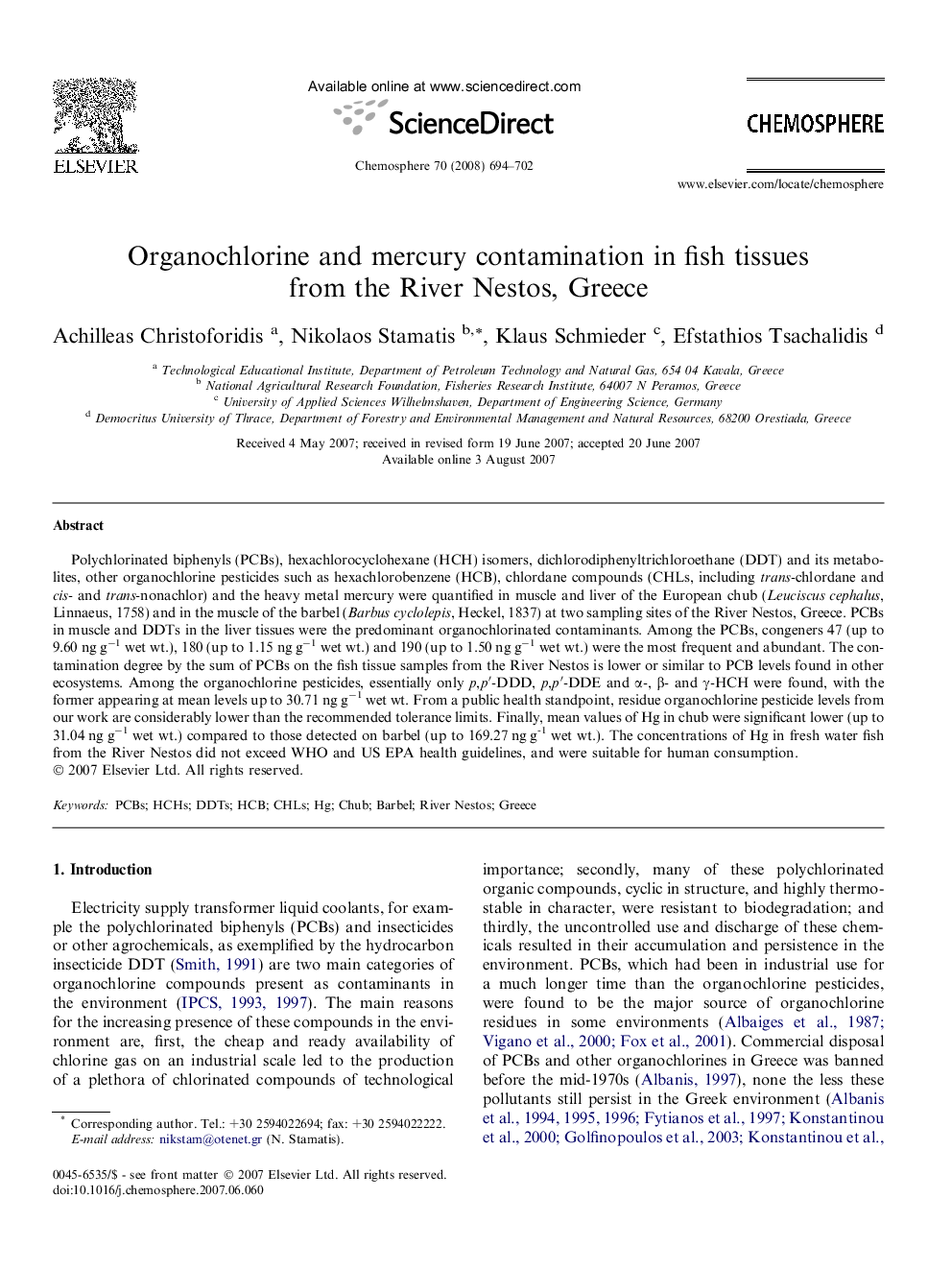| Article ID | Journal | Published Year | Pages | File Type |
|---|---|---|---|---|
| 4414433 | Chemosphere | 2008 | 9 Pages |
Polychlorinated biphenyls (PCBs), hexachlorocyclohexane (HCH) isomers, dichlorodiphenyltrichloroethane (DDT) and its metabolites, other organochlorine pesticides such as hexachlorobenzene (HCB), chlordane compounds (CHLs, including trans-chlordane and cis- and trans-nonachlor) and the heavy metal mercury were quantified in muscle and liver of the European chub (Leuciscus cephalus, Linnaeus, 1758) and in the muscle of the barbel (Barbus cyclolepis, Heckel, 1837) at two sampling sites of the River Nestos, Greece. PCBs in muscle and DDTs in the liver tissues were the predominant organochlorinated contaminants. Among the PCBs, congeners 47 (up to 9.60 ng g−1 wet wt.), 180 (up to 1.15 ng g−1 wet wt.) and 190 (up to 1.50 ng g−1 wet wt.) were the most frequent and abundant. The contamination degree by the sum of PCBs on the fish tissue samples from the River Nestos is lower or similar to PCB levels found in other ecosystems. Among the organochlorine pesticides, essentially only p,p′-DDD, p,p′-DDE and α-, β- and γ-HCH were found, with the former appearing at mean levels up to 30.71 ng g−1 wet wt. From a public health standpoint, residue organochlorine pesticide levels from our work are considerably lower than the recommended tolerance limits. Finally, mean values of Hg in chub were significant lower (up to 31.04 ng g−1 wet wt.) compared to those detected on barbel (up to 169.27 ng g-1 wet wt.). The concentrations of Hg in fresh water fish from the River Nestos did not exceed WHO and US EPA health guidelines, and were suitable for human consumption.
